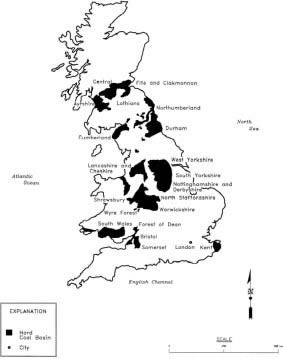Heat, Mechanical, Movement/Transportation, Electricity, Radiation etc
- Details
- Written by: J C Burke
- Hits: 12137
 Yes AD combined with CHP or even CHCP. What is all this acronym stuff eh?
Yes AD combined with CHP or even CHCP. What is all this acronym stuff eh?
AD is Anaerobic Digestion, its the sort of process that happens in a sewage works where all that nasty stuff is broken down by 'good' bacteria. What is left is largely safe but has given off lots of methane gas and CO2, along with some other trace stuff. Anaerobic means 'without Oxygen'.
So to create bio-methane by digestion of waste products has to be "Carbon (dioxide) Negative" as it is removing methane from being released into the atmosphere! See article below about atmospheric methane - CLICK HERE
Now that Methane is what we need. Its almost the same as Natural Gas that you buy at home. So it can be 'cleaned up' and sent down pipes to the gas mains or it can run a gas fired electricity generator.
But rather than just generate electricity, we also need to look at how effective the burning of gas in an engine really is. When gas is burned in say a modified car engine to drive a shaft to turn a generator to produce electricity, there are loses. These loses affect the efficiency of turning the energy value of gas into electricity. It is disappointing to discover that only around 20-25% of the gas burnt produces the electricity. The rest is 'low grade' waste heat.
 |
| The Chinese have over 2 million of these AD-CHP Units |
- Details
- Written by: J C Burke
- Hits: 5378
 Coal mine methane (CMM) is the term given to the gas trapped in coal seams, which has an approximate chemical composition of 70% methane, 15% carbon dioxide and 15% nitrogen. The gas is released once the seams are mined and can then escape to the atmosphere. Internationally, the UK was the sixth largest producer of coal mine methane in 1990,140 behind China, the former Soviet Union, the USA, Germany and South Africa. The UK submission to the UNFCCC declares that 0.24 Mt of methane were emitted from active coal mines during 2002, accounting for 12% of all UK methane emissions.
Coal mine methane (CMM) is the term given to the gas trapped in coal seams, which has an approximate chemical composition of 70% methane, 15% carbon dioxide and 15% nitrogen. The gas is released once the seams are mined and can then escape to the atmosphere. Internationally, the UK was the sixth largest producer of coal mine methane in 1990,140 behind China, the former Soviet Union, the USA, Germany and South Africa. The UK submission to the UNFCCC declares that 0.24 Mt of methane were emitted from active coal mines during 2002, accounting for 12% of all UK methane emissions.
Historically, the contribution of coal mine methane to the UK’s methane budget was more significant when major coal fields in the UK where extensively mined for power generation and industry (Figure 20). However, the decline of the UK coal industry and subsequent large-scale pit closures has resulted in far fewer mines and emissions. In 1947 there were 958 mines producing 189.6 Mt of coal annually. At present, there are just 17 deep mines and 39 open cast mines in the country, producing a total of 27.8 Mt coal in 2003.
The open cast mines release methane directly to the atmosphere. However, emissions from such mines are small as the seams lie close to the surface and have retained little of their original methane over geological time.
Why recover coal mine methane?
The primary reason for recovering coal mine methane is safety. Historically, underground mine explosions have been the cause of many injuries and fatalities, so reducing methane concentrations underground has aided mine safety operations.
Secondly, there is an economic motivation: if methane from coal mines can be captured, it can be used directly as a fuel or to generate electricity.
Lastly, there is the environmental imperative: reducing emissions of methane to the atmosphere aids the meeting of Kyoto and other targets.
